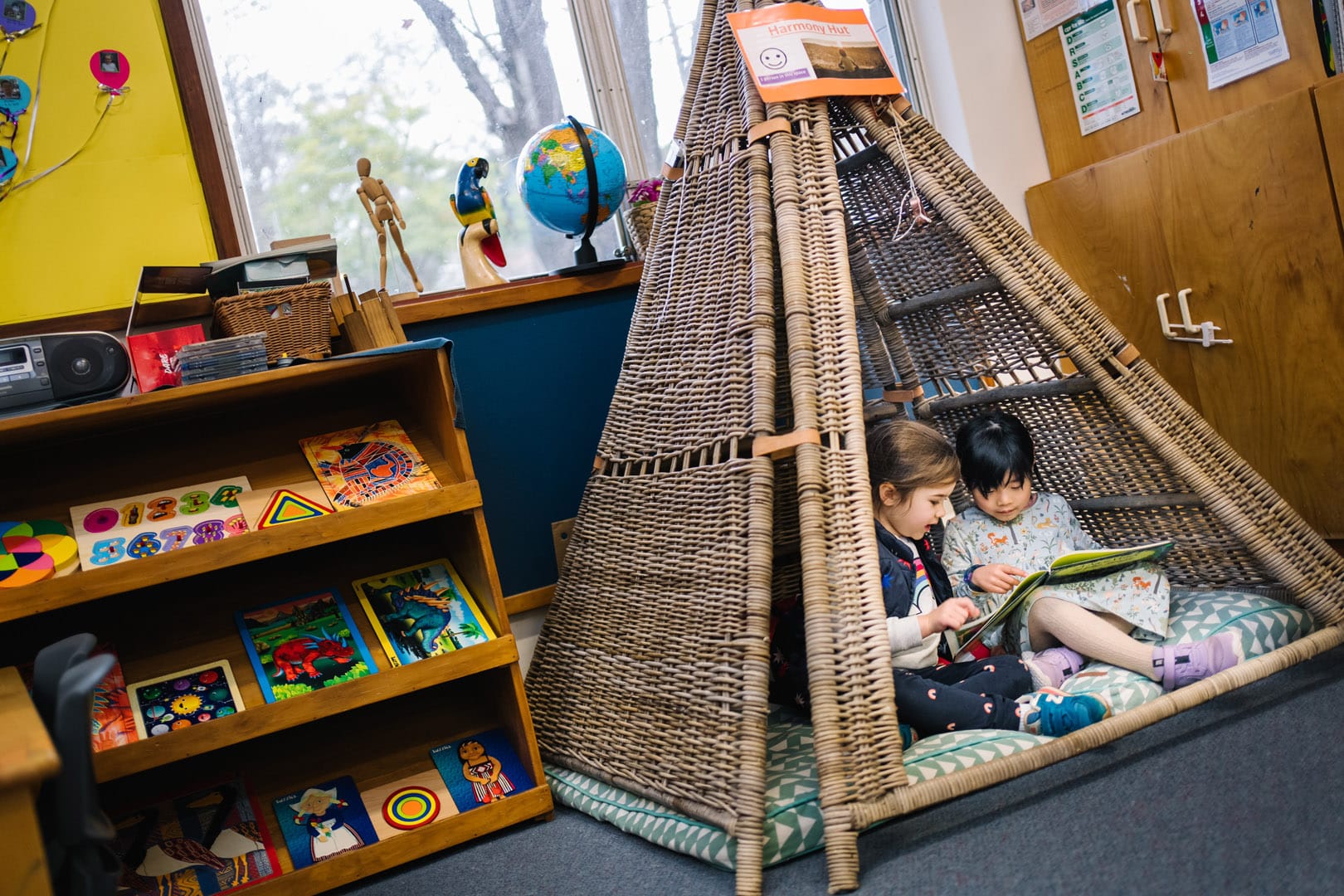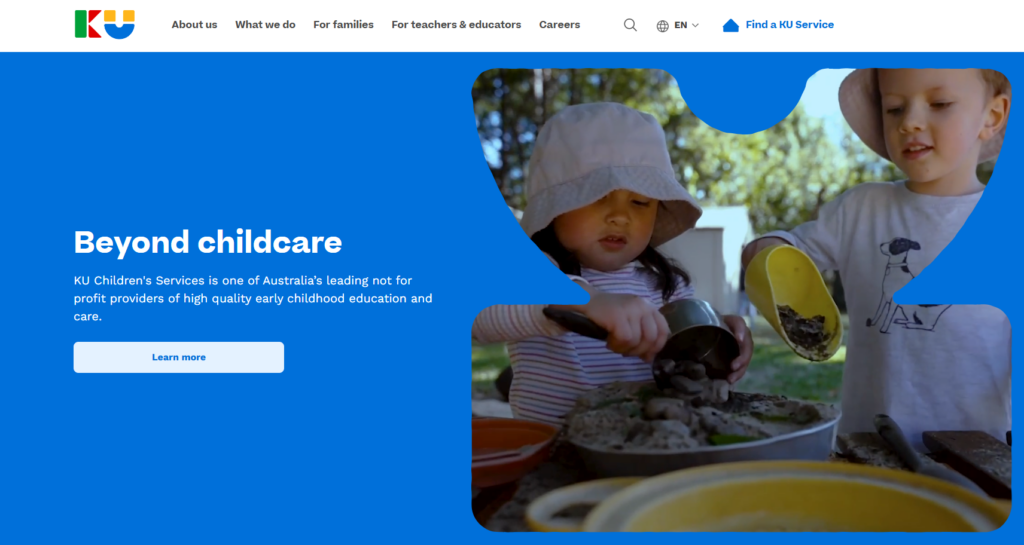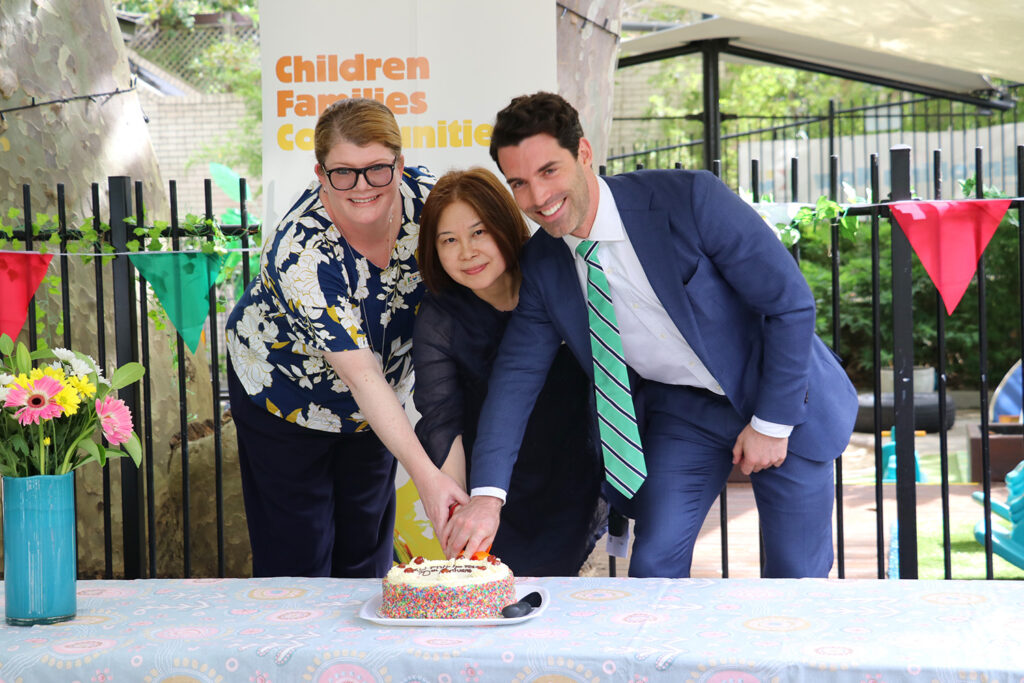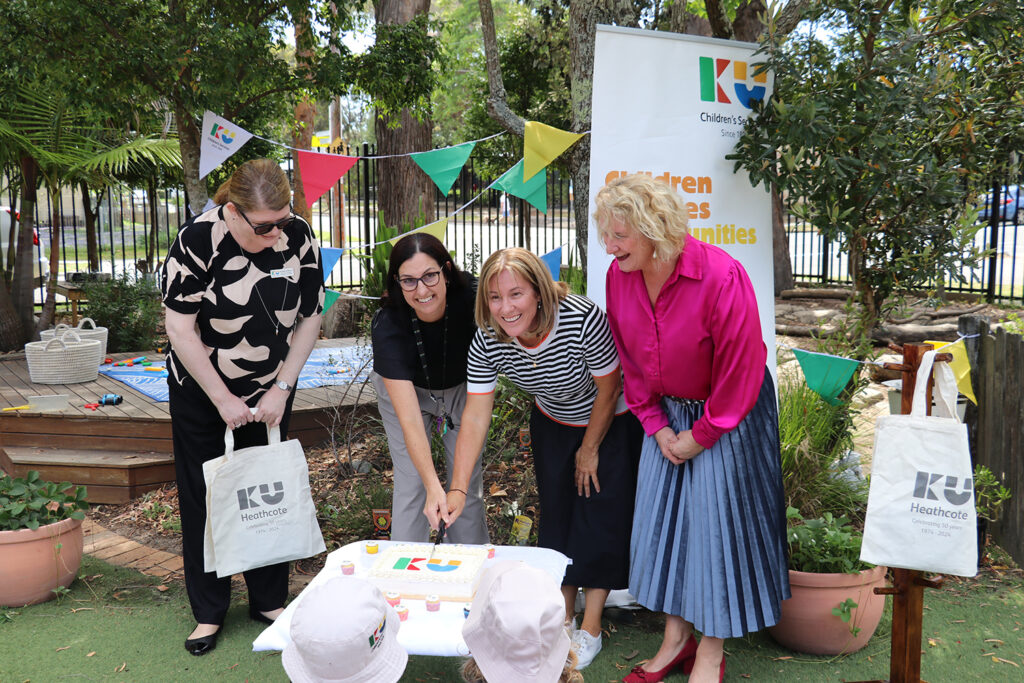
The early childhood book nook
Fran Bastion shares her wonderful insights about the space we create in our early childhood services for children’s literature.
By Fran Bastion, KU Learning and Development
March 2021
Do our ‘book nooks’ communicate visible signs of tenderness, care, and a considered collection of literature?
Do we design spaces that honour the rich learning potential of each encounter with quality children’s literature?
The book nook is an integral component of the established culture of each Centre. The language of the space communicates to children an understanding of belonging where individual and collective ideas and curiosities, interests and emotions are valued and opportunities for exploration, sharing and contemplation are supported. The book nook should celebrate predictability and possibility, allow for cozy retreat as well boisterous excitement. It should be a place for connection where new rituals may be observed and practiced. It should be a place to be.
A place to be…with Mum/Dad sharing a favourite story as a settling routine and precursor to a busy day.
A place to be…and feel safe, sometimes unsure, but open to exploring big feelings.
A place to be…inspired by new inventions and encouraged to be bold and imaginative, eager to pursue new worlds and possibilities.
A place to be…curious about how the world works; past, present and future.
A place to be…a friend, hatch a plan, solve a problem, discuss, debate and research
The Early Years Learning Framework (2009) advocates for childhood as a “time to be, to seek and make meaning of the world” and often the Book Area, with its promise of stories that excite the senses and stimulate the intellect, provide opportunities to visit and revisit exotic places and familiar havens. It allows for ways to unpack the human condition, consolidate friendships and tackle contemporary issues. It should extend an invitation to dwell in the space, to individuals and peer groups, educators, families and visitors to the space.
The book nook should showcase a personality full of characteristics that infuse the play space. It should embrace its visitors with welcoming arms – soft lighting (lamps), comfortable, cozy seating, arm chairs and/or lounges, cushions and rugs in mellow hues that subtlety convey a sense of tranquility and harmony. It should be filled with a diverse array of literature and resources, factual and fiction, picture books and chapter books, monolingual and bilingual (numerous and in many different languages), books that beg to be read aloud or pondered over in pursuit of hidden characters, books that enrich literacy learning and language development, that require a study of the cover and end pages and the intricacies of the illustrations that elevate the text and conspire to share the knowledge with children that text holds meaning.

One important characteristic of the ‘book nook’ is the balance between predictability and novelty. This balance leads to feelings of security on the one hand and interest, innovation and change that can create excitement and maintain enthusiasm on the other. The younger the child the more important predictability is. When children are confident that they know who will be there, what will be there, and what will happen in the space they feel secure. Feeling secure empowers them and frees them to learn. The suggestion therefore is to consider the potency and potential of the books currently offered and not to make changes for their own sake. Often educators rotate books as part of a weekly routine, with good intentions to provide diverse new offerings.
What messages however, are we then sending to the child who is eager to begin his day with mum on the lounge reading his very favourite story only to discover that it is gone – no longer available. Would it not be both sensitive and responsive to have those books – well-loved favourites – continue to live in the space, on the shelf or in baskets where children may have to hunt for them but trust that they will be there. There needs to be a purpose in establishing a ‘book nook’ that serves children’s learning and wellbeing. It is therefore important to keep in mind that a few modest changes can renew interest while leaving the favourites is also an imperative.
What opportunities for extension? Is there the potential to include resources such as characters, landscape features, puppets, backdrops – is there a small interest table designed with resources to retell the story, or resources that may enable children to construct features of the story, to be retold and /or dramatised and videoed to expand children’s digital literacy proficiency, and strengthen children’s shared engagement with quality literature.
Additional characteristics of the book nook, beyond traditional affordances educators could also include:
- Digital books: E-books and online apps via tablets that are accessible in the space. The global market for digital books offers the potential for a much easier production of international and multilingual variants of the same book.
- Graphic novels/comics: Following the adventures of Batman, Spiderman and the Avengers celebrates popular culture and can assist with engaging children in interesting and exciting texts.
- Casual literature: Such as texts that we encounter in our everyday lives, including newspapers, magazines, junk mail, advertising material, takeaway food menus, toy catalogues, cookbooks and recipes.
- Self-authored texts: Some of the most engaging texts that children can read are those that they have written themselves. Transcribing children’s stories into an e-reader, or encouraging children to publish their own work. Voice to text functions on smartphones and tablets are also a hassle-free way for children to create their own texts.
Books and reading never cease to encourage and move us, expanding our imaginations and bringing to life stories and worlds both real and fantastic.
- Consider what books you most enjoyed as a child. What was it that made them favourites?
- Consider the opportunity for relational learning.
- Are the memories of these stories shared with colleagues and children? Are they documented and shared as gifts to the learning community?
- Consider the idea of ‘ritual’ that may have been associated with sharing a story (perhaps a bed time story).
- How do we carry forward these memories to influence reading rituals with children in our environments?
“
The fire of literacy is created by the emotional sparks between a child, a book, and the person reading. It isn’t achieved by the book alone, nor by the child alone, nor by the adult who’s reading aloud—it’s the relationship winding between all three, bringing them together in easy harmony.
Mem Fox
Want to know more?
To learn more about supporting children’s literacy and the full range of KU Learning and Development courses and events, click the below button.
References
Australian Government Department of Education, Employment and Workplace Relations (2009 Belonging Being and Becoming: The Early Years Learning Framework for Australia. Commonwealth of Australia
Fox, M. (2001) Reading Magic: Why Reading Aloud to Our Children Will Change Their Lives Forever. Mariner Books



